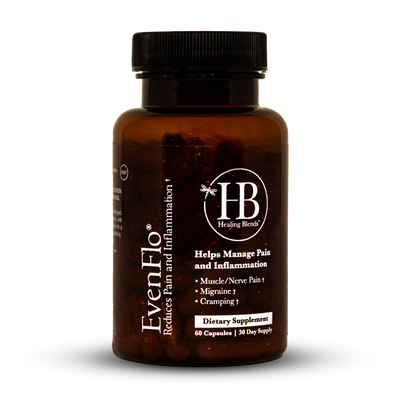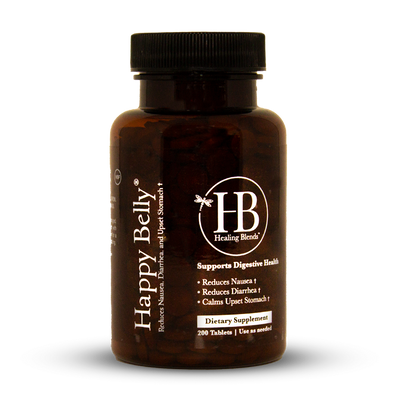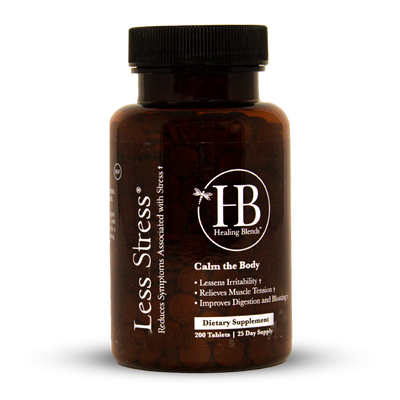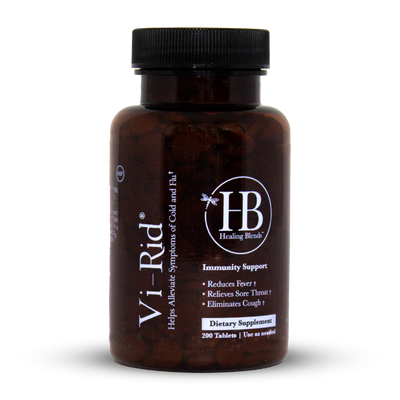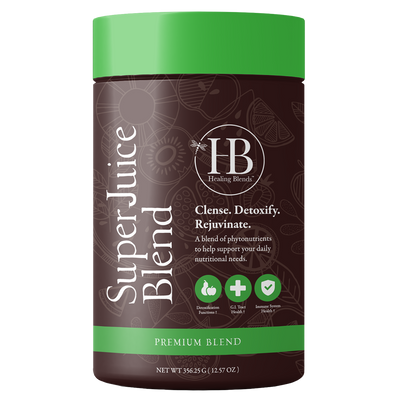Case Study of Patients with Type 2 Diabetes: the use of an herbal remedy, A1 Care, to help results
This case study is reviewing type 2 diabetes and the use of herbal supplement, A1 Care by Healing Blends Global, to help these patients alleviate the symptoms, the management, and parallel infections.
Type 2 diabetes currently effects approximately 300 million individuals worldwide. There are another estimated 500 million that go undiagnosed with type 2 diabetes yearly. By 2030, the number of individuals in the United States with type 2 diabetes will be over 14% of the US adult population. The current type 2 diabetes epidemic is closely associated with the parallel effects of obesity, with more than 85% of the individuals with diabetes being overweight and/or being obese. Furthermore, many glucose lowering treatments only complicate the weight management by causing patients to gain more weight as well as increasing the risk of secondary and tertiary diagnoses such as hypertension and neuropathy. The increase in complications of diabetes along with the comorbidities and the complications place a substantial burden on society and the primary care physicians. In the United States alone, diabetes now represents a 1 in 5 visit to the primary care physician and was reportedly the seventh leading cause of death from 2010 to 2015. These numbers possibly being higher due to the prevalence of the undiagnosed.
A glycated haemoglobin (HBA1C) treatment goal is greater than 7%. It is suggested for most patients and rated 8% and/or greater than 6.6% goals apply to special situations such as when patients with short or long projected lifespans respectively. Despite evidence linking good disease control with supposed glucose control medications, type 2 diabetes has been on the rise. One important reason for this are the adverse effects associated with glucose lowering therapies, particularly the previously established weight gain and hypoglycemia which would impact the adherence of the medication taken. Other patients’ reasons for suboptimal glycemic control include lack of knowledge, high emotional burdens of type 2 diabetes, lack of acceptance of the disease, reluctance to intensify medications and confusion related to complex treatment regimens. This is the reason why A1 Care and the use of herbal medications have been studied for years around type 2 diabetes. Herbal medications have been used for type 2 diabetes for many years. A1 Care is a combination of herbs that have been shown to help maintain healthy blood sugar levels as well as protect the cardiovascular system and prevent damage from high blood sugar levels. Some of the acting ingredients in A1 Care have proven to decrease HBA1C levels by decreasing the uptake of sugar by supplying bio trace nutrients or by using specific Phytochemicals that are bioactive nutritional components in plants found in herbal ingredients to create a desired effect of lowering blood sugar and/or blood pressure. The ingredients in A1 Care have been chosen for the unique characteristics, they have blended strands. Several of the ingredients have been shown to regulate several body and physiological functions. The lifestyle interventions usually associated with type 2 diabetes, patients have shown to be insufficient in maintaining glycemic control. Monotherapies such as metformin and other blood glucose lowering therapies, have undesirable side effects, can create comorbidities to most patients and isn’t a long term viable solution that are both cost effective and lifestyle adaptable. Therefore, the introduction of A1 Care has been shown to optimal in many areas. The case study in case study 1 will demonstrate some of this.
Case Study 1: Failure of Metformin Monotherapy
Essentially, what this means is one patient was only using metformin to lower their A1C and when we started using A1 Care, this is what we found.
A 68 year old patient with type 2 diabetes received an optimal metformin monotherapy for at least two years with a dose of 2000mg per day. They seemed to tolerate the treatment however, hypoglycaemia was an issue as well as increase in body mass index from 28 kg to 35kg over the two years. The patient now also has mild hypertension which was also being controlled high blood pressure medication which was the angiotensin converting enzyme (ACE) inhibitors. His blood lipid levels were also elevated over being controlled by atorvastatin; a statin dug for cholesterol (synvastatin) 10mg per day. The patients original HBA1C was 8.6%. The patient was advised to take A1Care, 2 pills twice daily, after one month of taking A1 Care, we came back to review any side effects as we went along. After reviewing the patients A1C through blood tests, we found that it dropped down to 7.6% within 45 days. Conversely, the hypertension, although still be controlled by the medication (the patient had also not changed any current medications) his hypertension had disappeared and the patient had lost 4kg in 45 days without exercise. The patient continued taking A1Care for another 3 months at the same dosage of 2 pill twice a day. Patient reported having more energy, less fluid retention in legs, while maintaining 12kg weight loss over 60 days.
The Discussion
In this case the patient having mild type 2 diabetes with an A1C of 8.6% and having cholesterol issues as well as hypertension during a course of two years. With just 45 days of being on, A1 Care, the patients HBA1C dropped an entire point to 7.6%, hypertension fell back in line, however the lipid panel was not performed at this time. A follow up of 90 days, the HBA1C was at 7.0%. The patients was told by his physician to stop taking his cholesterol medication, reduce his metformin intake by half, hypertension medication was discontinued, and the patient has now lost a total of 12kg without changing their diet or lifestyle. This is a common occurrence that we have seen with many patients who have been on metformin for more than a few years then switched over to A1 Care.
Case Study 2: Failure of Metformin and DPB-4 Inhibitor
This concerns a 65 year old female with a ten year history of type 2 diabetes and an A1C of 9.0%. despite receiving 2000mg of metformin and DPB-4 inhibitor for at least 12 months, her BMI is 29kg her muscular skeletal system has also started to be affected. She has mild cholesterol being controlled by statin and hypertension being controlled by a angiotensin 2 receptive blocker, her blood pressure is generally over . She also has concerns about hypoglycaemia and tries to avoid insulin.
The Discussion
The patients started A1 Care and was brought in every three weeks for a check. The patient did not stop taking the insulin, DPB-4 inhibitor and stayed on the 2000mg of metformin whilst taking A1 Care three times a day and after three weeks, her A1C dropped to 8.2% and she lost 3kg. for the first time she saw that her blood pressure was on an average, . She was still hypertensive, but the numbers slowly improved. She also saw that the pains and cramps she has in her legs and back decreased. The patient also had multiple lesions on her legs from open sores due to her diabetes, subsequently she saw a healing effect in the sores. After an adjustment of the A1 Care, the patient was told to take two pills, three time a day. The increase was due to the fact that the patient felt a better effect when she was taking more (she had been taking two pills due to misunderstanding the instructions). In six weeks, her A1C had dropped to 7.6%, her blood pressure was , she had lost a total of 10kg, and she has introduced more walking into her lifestyle, she slept better and the pain in her back and legs and decreased. At 12 weeks, the patient was told by her physician that she could reduce the amount of her DPB-4 inhibitor and she could also decrease her metformin intake to 1000mg per day. She spoke to her physician about her statin and hypertension medication since her blood pressure had been maintaining for over three weeks. In week 16, her A1C was at 7.2%, her blood pressure was and her total weight loss was now 16kg and the patient had started to go back to the gym and build strength in her legs.
Case study three:
A 62-year-old male on metformin. He had a HB1 of 8.6%. he was using insulin but stopped due to a fear of injections, hence his start in the use of A1 Care. He also had hypertension.
The Discussion
The patient had episodes of hypoglycaemia. After taking 2000mg of metformin and two A1 Care pills, twice a day, the patient called the office after the first week since his bloody sugar levels upon awakening were on average 76, which was unusual. He was instructed to cut down to one pill, three times a day and to not take metformin and A1 Care together and at least take them an hour apart. Four weeks later, we had not heard from the patient until this report. His HBAIC was 7.8%, he had lost 5kg and his blood pressure was . His blood pressure was still high but the patient also complained about not sleeping at night because of anxiety which could be a cause. At 8 weeks, he reported a HB1AC of 7.2%, with a total weight loss of 10kg, his bloody pressure had dropped to and he was able to sleep better at night. He was still taking one pill three times a day and had not had any episodes of hypoglycaemia.
Simplified Discussion
A1 Care, as previously stated, is a combination of herbs, shown to actually have an effect on reducing the A1C as well as controlling blood glucose. Prominent herbs in A1 Care include dandelions which have shown to contain vitamins A, B, C and D. It also contains minerals such as iron, potassium and zinc. Studies suggest dandelions being used to treat diabetes can reduce glucose levels up to 30%. Inulin, another nutrient may be responsible for its effect on blood sugar levels. Dandelions also have antioxidant properties that help reverse damage linked to diabetes complications such as neurological and other damage. Dandelion helps increase immune systems, regulate blood sugar levels and lower blood pressure. It is linked to effects on oxidative stress created by fluctuating blood sugar levels and has been shown to improve blood glucose levels by inhibiting glucosidase enzymes. Science conducted on the antioxidant effects of turmeric indicate that they improve kidney functions and help treat neuropathy related diabetes. This helps reduce blood sugar levels by increasing insulin sensitivity, providing an effective alternative to conventional synthetic insulin. Polygoni Multflori contains emodin, a vital chemical shown to have antidiabetic properties that improve glucose tolerance and insulin sensitivity which is shown to lower cholesterol levels, decrease free glucose and improve lipid regulations. Anemerrhea contains high doses of berberine and mangeferin. This combination has been shown in studies by many universities around the world to show its antidiabetic effects, by not just lowering blood glucose but also helping to repair damage to the pancreas and help the uptake of free-floating glucose in the blood stream. It is also shown to chelate the body of iron and help the body with antioxidant properties.
This is the reason why A1 Care is superior in lowering not just HBA1C and blood glucose levels, but also allowing the body to be restored due to it helping the body burn healthy fat, restore blood glucose levels and supplies the body with fibro nutrients it needs to thrive and the micronutrients that are often lost during the process of having high blood glucose. It helps repair the blood vessels, arteries and the nerves that have been damaged due to high blood glucose levels. For these reasons, A1 Care is superior in treating diabetes and brings clinical awareness of these factors that should lead to better treatment choices, improve adherence and improve outcomes for our patients.
Reference:
- Iddrisu I, Oduro I, Tandoh MA. The effect of dandelion leaves and roots on blood glucose in type 2 diabetes patients. J Nutr Ecol Food Res. 2016;3(2):125-132(8).
- Alarcon-Aguilara F, Roman-Ramos R, Perez-Gutierrez S, Aguilar-Contreras A, Contreras-Weber C, Flores-Saenz J. Study of the anti-hyperglycemic effect of plants used as antidiabetics. J Ethnopharmacol. 1998;61(2):101–110.
- Mingarro DM, Plaza A, Galan A, Vicente JA, Martinez MP, Acero N. The effect of five Taraxacum species on in vitro and in vivo antioxidant and antiproliferative activity. Food Funct. 2015;6(8):2787–2793.
- Schütz K, Carle R, Schieber A. Taraxacum—a review on its phytochemical and pharmacological profile. J Ethnopharmacol. 2006 Oct 11;107(3):313-23.
- Cho SY, Park JY, Park EM, et al. Alternation of hepatic antioxidant enzyme activities and lipid profile in streptozotocin-induced diabetic rats by supplementation of dandelion water extract. Clin Chim Acta. 2002;317(1- 2):109-17.
- Arun N, Nalini N. Efficacy of turmeric on blood sugar and polyol pathway in diabetic albino rats. Plant Foods Hum. Nutr. 2002; 57:41–52.
- Lekshmi PC, Arimboor R, Indulekha P, Menon AM. Turmeric (Curcuma longa L.) volatile oil inhibits key enzymes linked to type 2 diabetes. Int J Food Sci Nut. 2012;63(7):832-834. doi:10.3109/09637486.2011.607156
- Khajehdehi P, Pakfetrat M, Javidnia K, et al. Oral supplementation of turmeric attenuates proteinuria, transforming growth factor-β and interleukin-8 levels in patients with overt type 2 diabetic nephropathy: A randomized, double-blind and placebo-controlled study. Scand J Urol Nephrol. 2011;45(5):365-370.
- Fu YP, Feng B, Zhu ZK, et al. The polysaccharides from Codonopsis pilosula modulates the immunity and intestinal microbiota of cyclophosphamide-treated immunosuppressed mice. Molecules. 2018;23(7):1801. http://dx.doi.org/10.3390/molecules23071801
- Jeong S-Y, Kang S, Kim DS, Park S. Codonopsis Ianceolata Water Extract Increases Hepatic Insulin Sensitivity in Rats with Experimentally-Induced Type 2 Diabetes. Nutrients. 2017;9(11):1200. doi:10.3390/nu9111200.
- Chan JY, Lam FC, Leung PC, Che CT, Fung KP. Antihyperglycemic and antioxidative effects of a herbal formulation of Radix Astragali, Radix Codonopsis and Cortex Lycii in a mouse model of type 2 diabetes mellitus. Phytother Res. 2009;23(5):658-65. doi: 10.1002/ptr.2694
- Xue J, Ding W, Liu Y. Anti-diabetic effects of emodin involved in the activation of PPARgamma on high-fat diet-fed and low dose of streptozotocin-induced diabetic mice. Fitoterapia. 2010;81(3):173-7. doi: 10.1016/j.fitote.2009.08.020.
- Lin P, He YR, Lu JM, et al. In vivo lipid regulation mechanism of Polygoni Multiflori radix in high-fat diet fed rats. J Evid Based Complementary Altern Med. 2014;2014. http://dx.doi.org/10.1155/2014/642058.
- Kho MC, Lee YJ, Park, JH, et al. Combination with red ginseng and Polygoni Multiflori ameliorates high fructose diet induced metabolic syndrome. BMC Complement Altern Med. 2016;16(98). https://doi.org/10.1186/s12906-016-1063-7.
- Li T-H, Hou C-C, Chang CL-T, Yang W-C. Anti-Hyperglycemic Properties of Crude Extract and Triterpenes from Poria cocos. Complement Altern Med. 2011;2011:128402. doi:10.1155/2011/128402.
- Graffigna G, Barello S, Libreri C, Bosio CA. How to engage type-2 diabetic patients in their own health management: implications for clinical practice. BMC Public Health. 2014;14:648.
- Munshi MN, Segal AR, Suhl E, et al. Assessment of barriers to improve diabetes management in older adults: a randomized controlled study. Diabetes Care. 2013;36(3):543-549.
- Schmittdiel JA, Uratsu CS, Karter AJ, et al. Why don't diabetes patients achieve recommended risk factor targets? Poor adherence versus lack of treatment intensification. J Gen Intern Med.2008;23(5):588-594.
- Shah ND, Mullan RJ, Breslin M, et al. Translating comparative effectiveness into practice: the case of diabetes medications. Med Care. 2010;
- 48(Suppl 6):S153-S158.
- Gaede P, Lund-Andersen H, Parving HH, Pedersen O. Effect of a multifactorial intervention on mortality in type 2 diabetes. N Engl J Med. 2008;358(6):580-591.
- Lee YK, Ng CJ, Lee PY, et al. What are the barriers faced by patients using insulin? A qualitative study of Malaysian health care professionals' views. Patient Prefer Adherence. 2013;7:103-109.
- Cheng AY, Fantus IG. Oral antihyperglycemic therapy for type 2 diabetes mellitus. CMAJ. 2005;172(2):213-226.
- Defronzo RA. Banting lecture. From the triumvirate to the ominous octet: a new paradigm for the treatment of type 2 diabetes mellitus. Diabetes. 2009;58(4):773-795.
- Nathan DM, Buse JB, Davidson MB, et al. Medical management of hyperglycemia in type 2 diabetes: a consensus algorithm for the initiation and adjustment of therapy: a consensus statement of the American Diabetes Association and the European Association for the Study of Diabetes. Diabetes Care. 2009. 32(1):193-203.
- Violante R, Oliveira JH, Yoon KH, et al. A randomized non-inferiority study comparing the addition of exenatide twice daily to sitagliptin or switching from sitagliptin to exenatide twice daily in patients with type 2 diabetes experiencing inadequate glycaemic control on metformin and sitagliptin. Diabet Med. 2012;29(11):e417-e424.
- Cavanaugh KL. Diabetes management issues for patients with chronic kidney disease. Clinical Diabetes. 2007;25(3):90-97.
- Abe M, Okada K, Soma M. Antidiabetic agents in patients with chronic kidney disease and end-stage renal disease on dialysis: metabolism and clinical practice. Curr Drug Metab.2011;12(1):57-69.
- European Medicines Agency. Forxiga: Summary of product characteristics. www.ema.europa.eu/docs/en_GB/document_library/EPAR_-_Product_Information/human/002322/WC500136026.pdf. Accessed March 10, 2015















